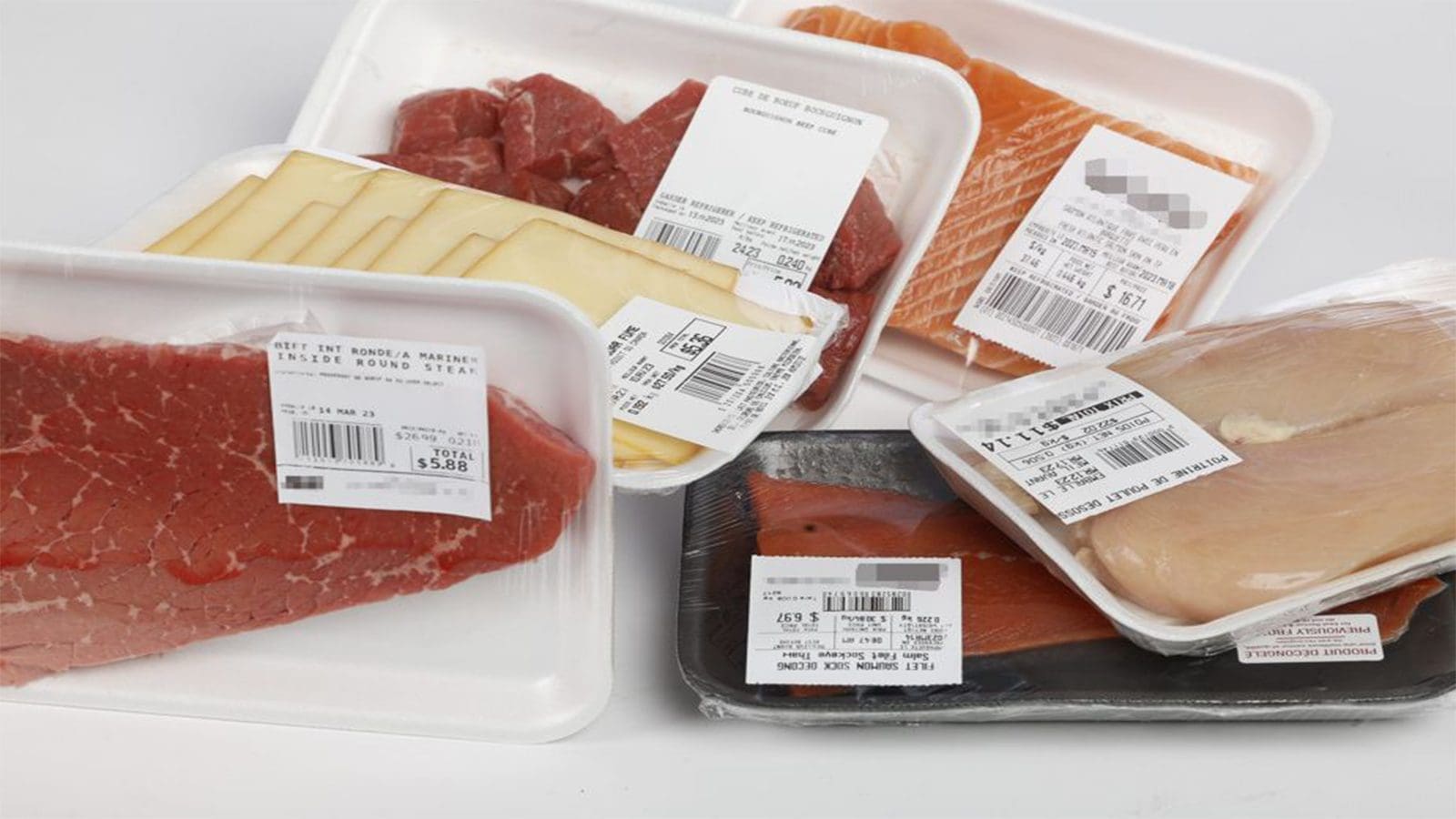CANADA – After looking at a variety of packaged fresh food, a Canadian study has concluded that noxious compounds like Bisphenol S (BPS) migrate from the packaging materials into price tags and labels.
To test the hypothesis that migration from the thermal labels on plastic film packaging is a major source of exposure to bisphenols and alternative color developers in food, the researchers analyzed 140 packaging materials from packaged fresh food purchased in North America.
No bisphenol A (BPA) was detected in either the packaging samples or thermal labels. However, significant amounts of bisphenol S (BPS) and alternative color developers (up to 214 μg/cm2) were present in thermal labels; their relative occurrence varied among stores.
BPA, which is frequently found in plastics, the lining of food cans, water bottles, and paper receipts, was outlawed by the Canadian government in 2010. Unfortunately, this has resulted in the hormone-disrupting chemical Bisphenol S (BPS) replacing BPA.
Stéphane Bayen, an Associate Professor of Food Science and Agricultural Chemistry at McGill University, says that BPA is a chemical that can interfere with hormones in the body and have negative health effects. Cancers, diabetes, and harm to fertility and fetal development are a few of them.
There is currently mounting evidence that BPS might have similar health impacts.
“Considering the number of packaged food items sold with thermal labels, the actual dietary intake of BPS and other chemicals is likely to be high,” Bayen adds.
Although BPS is not currently regulated in Canada, the study’s findings indicate that the amount of BPS present in the foods examined was for the very first time significantly higher than the limit set by the European Union, which governs the permitted levels of substances released from packaging materials into contact with food.
Under the European Regulation EC 10/2011, BPS is authorized for use as a monomer in plastic food contact articles with a specific migration limit of 0.05 mg/kg food.
The study comes to the conclusion that in order to provide regulatory requirements for the food industry, a more thorough risk evaluation of BPS and its capacity to migrate into food packaging is required.
PFAs
The important chemical poly-fluoroalkyl (PFAS), which was outlawed in New York earlier this year, has also been regulated in food packaging.
Based on testing performed by the Environmental Protection Agency (EPA), FDA said it has become aware that certain per- and poly-fluoroalkyl substances (PFAS) can form and migrate from some fluorinated high-density polyethylene (HDPE).
PFAS are a diverse group of human-made chemicals, also known as “forever chemicals”, used in a wide range of consumer and industrial products.
Among other uses, PFAS are added to paper products designed to hold hot, greasy foods due to their ability to repel water, grease, and stains
A 2017 study12 identified 46 different fluorochemicals in popcorn bags from 17 countries around the world.
For all the latest food safety news from Africa and the World, subscribe to our NEWSLETTER, follow us on Twitter and LinkedIn, like us on Facebook and subscribe to our YouTube channel.








